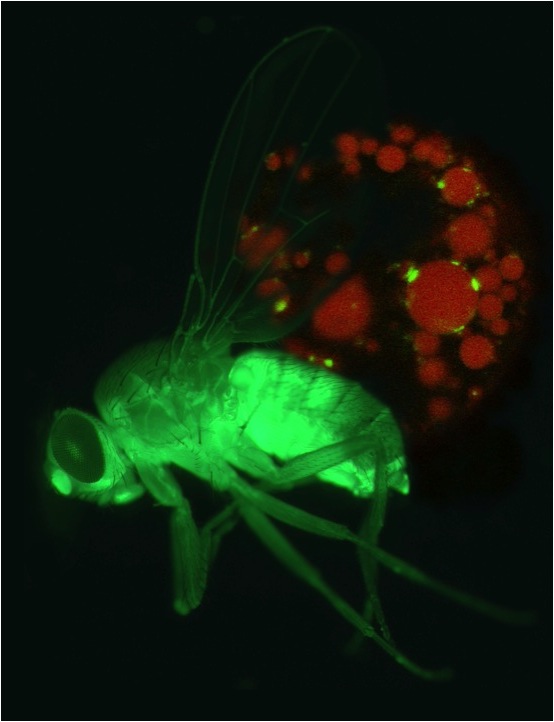Control of adiposity and lipid metabolism in Drosophila
Ronald P. Kühnlein
1Institute of Molecular Biosciences, University of Graz, Humboldtstrasse 50/2.OG, A-8010 Graz, Austria and 2Research group Molecular Physiology, Max Planck Institute for Biophysical Chemistry, Am Fassberg 11, D-37077 Göttingen, Germany
Alternating storage lipid accumulation and mobilization is a universal strategy of organisms to ensure survival under fluctuating environmental conditions and varying internal energy demands. In spite of the importance of this lipid homeostasis, the underlying intricate systemic and tissue-/organ-specific regulatory systems are incomprehensively understood in any animal.
We took advantage of the unrivaled genetic tools available in the Drosophila melanogaster model system to reveal factors and mechanisms of storage lipid accumulation, mobilization, and transport, which ensure the supply of energy and biosynthetic building blocks to every cell of the fly organism at all times. Notably, key factors such as the triacylglyceride lipase Brummer (also called Drosophila ATGL) or the lipid droplet-associated Perilipins are sequence-conserved between fruit flies and mammals. Similarly, the mode of action of the glucagon-like adipokinetic hormone witnesses a degree of evolutionary conservation, which suggests a common genetic architecture of storage lipid homeostasis shared by species as different as flies and men. Accordingly, Drosophila research does not only advance our understanding of the physiology of insects, which represent the most species-rich class in the animal kingdom; given the remarkable evolutionary conservation, findings in the fruit fly might also spur translational research with relevance for human health and disease.
My presentation will highlight strengths and limitations of the Drosophila system using examples of ancestral themes and of more recent adaptations in fruit fly lipid homeostasis regulation to eventually highlight future directions in this active research field.









You must be logged in to post a comment.